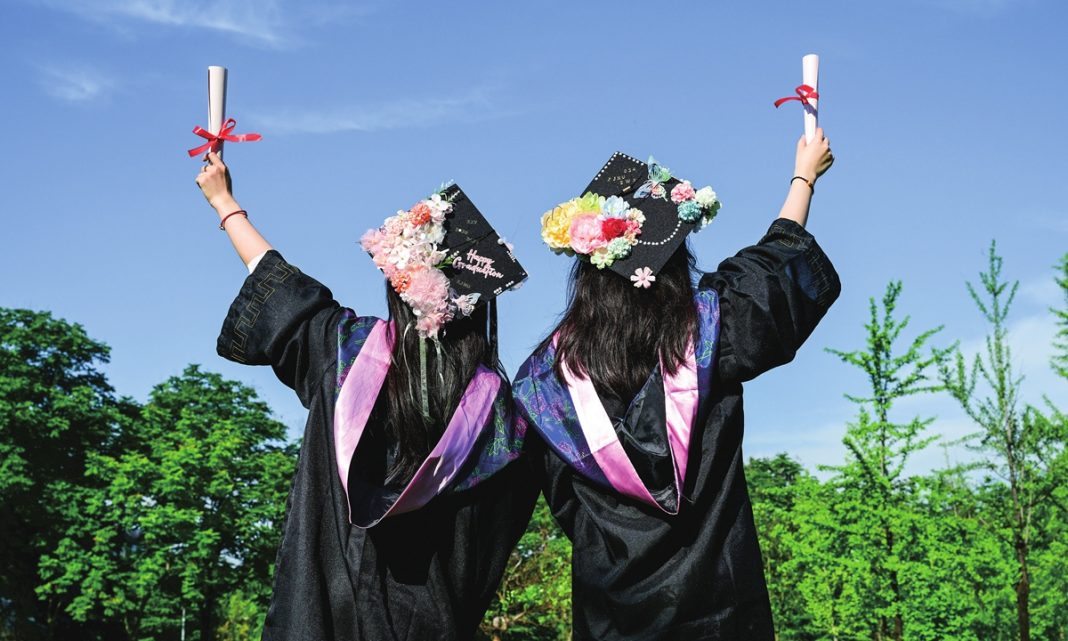BEIJING: All the goals and tasks in the field of education set out in the 14th Five-Year Plan period (2021-25) have been fully accomplished, Minister of Education Huai Jinpeng said at the State Council Information Office’s press conference on the high-quality completion of the 14th Five-Year Plan on Tuesday.
Notably, higher education has cumulatively supplied 55 million professionals to society, while vocational education has provided over 70 percent of the skilled workers newly added to the country’s modern industries, the minister said.
Huai noted that universities have secured more than 75 percent of the State Natural Science Award and State Technological Invention Award as well as over 55 percent of the State Scientific and Technological Progress Award.
Several universities have achieved a series of groundbreaking outcomes in life sciences, quantum technology, artificial intelligence, materials science and space science. Significant progress has also been made in philosophy and social sciences, as well as culture and arts, according to the minister.
Efforts continue to strengthen the cultivation of top-notch innovative talent in foundational disciplines through initiatives like the “plan for strengthening basic academic disciplines.” Additionally, pilot developments of national-level colleges in cutting-edge fields such as artificial intelligence, integrated circuits, and life sciences are being advanced to explore the integration of industry and education, as well as the fusion of science and education, according to the minister.
Xiong Bingqi, director of the 21st Century Education Research Institute, told the Global Times on Tuesday that China has transitioned into the era when higher education has become universal in the country.
The national college entrance exam, also known as Gaokao, consistently sees over 10 million students take it annually. In 2025, a total of 13.35 million Chinese students sat the exam, according to Xinhua News Agency.
In 2023, over 10.42 million students were enrolled in universities, colleges and vocational schools nationwide, up 2.73 percent year-on-year, according to the ministry, per Xinhua.
Also this year, China’s higher education graduates is expected to reach 12.22 million, Xinhua report said.
As China’s higher education system continues to cultivate a skilled workforce for the domestic market, a standout feature of this year’s autumn recruitment has been the steadily increasing demand for AI-related roles in the internet industry, as reported by media.
Data shows that in the third quarter of this year, recruitment demand for AI engineers increased by 25 percent year-on-year. Among them, the average monthly salary for AI engineers reached 21,370 yuan. Notably, the average monthly salary for robotics algorithm engineers rose to 26,971 yuan, reflecting a 10 percent year-on-year increase, according to China Central Television.
Xiong said that as higher education has become universal in China, society should no longer be a “degree-focused society” but rather a “competence-based society.”
The expert noted that solely emphasizing academic credentials while neglecting practical skills will inevitably lead to degree inflation and underemployment among the highly educated.
China places greater emphasis on vocational education and builds a modern vocational education system, Xiong Bingqi added.
In 2022, China’s newly revised Vocational Education Law explicitly defined vocational education as a type of education with equal status to general education and clarified the promotion of a vocational education college entrance examination system on par with the general Gaokao.
China has established the world’s largest vocational education system, Vice Minister of Education Xiong Sihao said at the themed press conference. China’s vocational education system currently comprises three levels: secondary vocational schools, higher vocational institutions, and vocational undergraduate programs. There are 9,302 secondary vocational schools, 1,562 higher vocational institutions, and 87 vocational undergraduate colleges, with a total enrollment of 34 million students.
China’s economy has entered a phase of industrial upgrading, eliminating outdated and low-value technologies. This is where vocational school students can effectively meet the demand, Che Yanqiu, a professor from Tianjin University of Technology and Education, told the Global Times.
Xiong Sihao said master craftsmen and highly skilled personnel are vital components of the nation’s strategic talent pool, serving as crucial human resources for driving industrial innovation and upgrading. –The Daily Mail-Global Times news exchange item






